Dr Emma Walker talks Johnnie Walker and women in leadership
By Miona MadsenSince taking over the role of master blender for Johnnie Walker, Dr Emma Walker has explored the possibilities of the iconic brand.
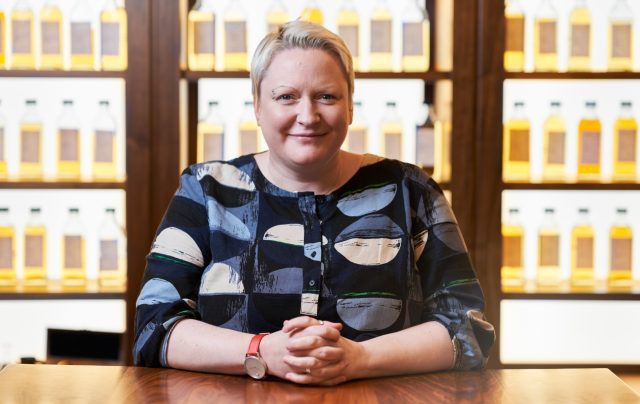
Jumping into the shoes of a master blender of any brand is challenging, but even more so when that brand is the best-selling blended Scotch whisky worldwide, Johnnie Walker. Dr Emma Walker – no relation to founder John Walker – is not only the eighth master blender to take on the role since the brand’s founding in 1820, but also the first female master blender in Johnnie Walker’s more than 200-year history.
Walker joined Diageo in February 2008, moving from production to collaborating closely with her predecessor and mentor, Dr Jim Beverage and the whisky team. Together, they focused on strategic projects and explored how to produce whisky in the future.
On 1 January 2022, Walker officially took over as the master blender for Johnnie Walker, following in the footsteps of Beverage, a 40-year industry veteran. Now, more than three years later, we checked in to see how she has adjusted to her new role.
“Sometimes, I have to pinch myself to believe this is the job I’m doing,” says Walker. “Working with our talented teams around the world and the enrichment we have had has been fantastic.”
Over the past three years, Walker has guided the team in developing new releases, including Blue Label Ice Chalet and her first core range expression, Black Ruby. Black Ruby made its debut in travel retail in September 2024, with a broader distribution rollout commencing from March 2025.
Walker has also played a key role in launching Johnnie Walker Vaults, a new global luxury platform for collaborative blends with cultural icons. For the first collaboration under the Vault, Walker joined forces with French fashion designer Olivier Rousteing to create a collection of couture whiskies.
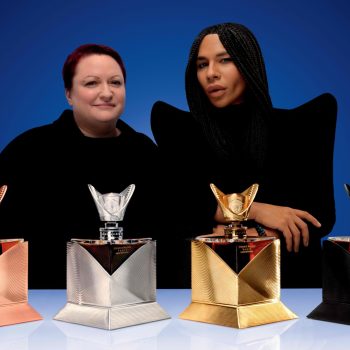
Walker praises not only the celebrity collaborations but the entire Johnnie Walker whisky team: “The highlights of my work always come from the incredible people I collaborate with. I often talk about our whisky team, which consists of 12 amazing individuals who truly make coming to work a joy. I also enjoy working with colleagues across Scotland and around the world.”
As another highlight, Walker names her experience of exploring ‘the elusive concept’ of umami, created in collaboration with Michelin-starred chef Kei Kobayashi. The experience allowed Walker to gain a deeper understanding of umami: a term often used, but maybe not grasped in its cultural significance.
Walker continues: “Collaborating with these talented individuals has been incredibly rewarding; I’ve learned from them and gained insights into their worlds. I’m particularly interested in how we can incorporate these lessons into the whisky industry. A key takeaway for me is finding ways to keep Johnnie Walker relevant today by engaging with the broader cultural landscape and understanding the world around us.”
A collaborative spirit
Just as the old saying goes, ‘it takes a village to raise a child’, it takes a dedicated team to create a long-lasting brand. While Walker leads the blending team, the future of Johnnie Walker is a shared effort.
“I believe one perspective that Jim had, and I continue to carry forward, is that part of the reason we have a team is to ensure we are not solely reliant on my views and preferences,” she explains. “By having a diverse team, we strive to reflect the community in Scotland that enjoys our whiskies. We include a mix of ages, genders, and experiences coming together.”
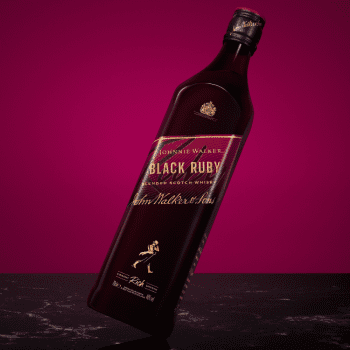
Walker adds: “I thoroughly enjoy collaboration and working with others to understand their perspectives. Engaging with how they view the world we know so well allows me to incorporate their viewpoints into my own, which has been incredibly rewarding. These past three years have offered amazing opportunities to dive into this collaborative spirit.”
Many observant whisky enthusiasts may have noticed that many chemists are working in whisky. But what is the significance of understanding chemistry for a blender? For Walker, the understanding of science is crucial, while working in the field doesn’t necessarily require a doctorate.
“Our team is primarily made up of scientists, but we also believe in the importance of having a diverse range of backgrounds on our team. We are a group of enthusiasts who enjoy learning extensively,” says Walker. “Chemistry is particularly valuable to us because it allows us to understand, at a molecular level, what is happening throughout our processes. It also helps us comprehend the changes that occur during maturation or distillation.”
She continues: “This understanding is crucial, as it gives us insight into how flavours are created and how they evolve. It enables us to blend our craftsmanship with our creative side effectively. Before Jim left, we had conversations aimed at encapsulating our focus. He mentioned that during his time in the role, the scientific understanding of whiskey really advanced. While we still have that foundation, it has become almost routine.
“Now, we are entering a phase where we ask ourselves what we want to explore and experiment with. Johnnie Walker has a long history of experimentation, which is one of the most exciting aspects of this journey. I find it fascinating to honour our heritage while also asking, ‘What’s next? What can we innovate?’ For us, finding a balance between science and art is essential. Science itself can be seen as a form of art, as creativity is required to explore new ideas and possibilities.”
Continuing the legacy
At first glance, becoming a master blender for such an iconic and well-recognised brand may seem glamorous; however, for Walker, it has also presented challenges and a sense of responsibility, as she explains: “Working with whisky is always a challenge because it involves addressing the past, present and future. You’re dealing with whisky that was laid down before you took on your role, which means you have to manage various challenges. For instance, if you’re looking to sell more of a particular style of whisky, the inventory may not have been prepared to meet that demand.
“The goal is to produce exceptional whiskies that people want to drink while catering to their preferences for brands like Johnnie Walker. At the same time, we need to focus on innovation.

“It’s crucial that the whiskies we lay down now are the ones that the next generation of master blenders will be eager to use. Additionally, we must consider how to do all this most sustainably and creatively, challenging our perceptions of whisky. There are always ongoing challenges to navigate, but it’s these very challenges that keep us engaged and passionate about our work.”
Speaking of passion, one of Walker’s favourite types of whiskies, grain whisky, has also been given a new lift in the brand’s blends. For more than a year, Walker worked as a quality manager at the Cameronbridge Distillery in Fife, gaining insight into the sometimes less recognised type of whisky.
“I genuinely believe that grain whisky is remarkable,” she says. “Grain whiskies maintain high-quality standards and boast a lot of diversity. Many people, when they hear about grain whisky, often assume it is just a mix, cheap, or bulked up to increase volume. However, what they may not realise is that each grain distillery has its own unique character and flavour profile. For example, if you compare distilleries like Girvan, Cameronbridge, and North British, you will find that they are all inherently different.”
Walker continues: “I think grain whisky is exceptional at all ages, but it truly shines when aged longer. It’s comparable to taking a bite of the most perfect Scottish raspberry in summer when it bursts with juice – mouth-watering and sweet. That’s how I perceive grain whisky; it is simply beautiful.”
As a new tool for the brand’s master blender repertoire, Walker has been able to utilise whiskies from Diageo’s Roseisle Distillery close to Elgin. She has been involved with the distillery, which produces multiple types of whiskies, since it opened in 2009.
“With Roseisle, it’s been fascinating to see how the whisky has matured over time, and I love that we can experiment with different styles. For instance, we often explore lighter, grassy flavours, which are amazing, as well as fruitier notes. One of my favourite flavour profiles includes red berries – raspberries and strawberries, in particular,” Walker says.
“We’re also examining campaigns where more complex flavours emerge, drawing parallels to whiskies like Benrinnes. It’s intriguing to see how Roseisle shifts between these different styles.”
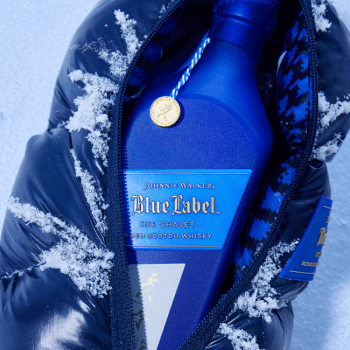
Engaging with consumers
As a master blender, Walker believes that connecting with consumers and personalisation are at the heart of Johnnie Walker. This approach was established by John Walker, who established his family shop in Kilmarnock in 1820 and created individual blends of whisky tailored for the people who visited the shop.
“I believe it’s crucial to connect with our customers,” says Walker. “When we develop a new whisky, we always begin with a specific brief that identifies our target consumer, the occasion, and the experience we aim to create. We consider how the whisky will be enjoyed: will it be neat, in a cocktail, during a quiet moment, or at a vibrant music festival? Understanding these factors is central to our process.
“At the heart of our work is the question: who will be drinking this whisky? Why will they be drinking it? To remain relevant, our whisky team actively participates in events such as whisky shows and works closely with brand ambassadors and bartenders. This engagement helps us gauge what consumers currently desire.”
For Walker, making the brand’s presence known across all markets plays a key role. While Johnnie Walker has tapped into the high-end market with limited and collaborative releases, the brand leads the best-selling Scotch whisky sales by making its range approachable to people worldwide.
“It is important for us to recognise that whisky, regardless of the variety, represents luxury,” says Walker. “Whisky allows individuals to take a moment away from the hustle and bustle of daily life to savour something crafted in Scotland. It embodies the spirit of Scotland, with its rich flavours and warmth.”
Diversity and equality
Walker’s appointment as the first female master blender of Johnnie Walker represents a milestone for equality in the whisky industry. Although women have always been a part of this world, there has been a growing recognition of their roles as both makers and drinkers of whisky.
At Diageo and its predecessor, Distiller’s Company, women have played a significant role in the creation of some of the company’s most renowned spirits. For instance, Maureen Robinson dedicated 45 years to the industry, serving as a master blender for Buchanan’s and working with Diageo’s single malts. Similarly, Caroline Martin contributed 33 years to Diageo, including working as the master blender for J&B Rare.
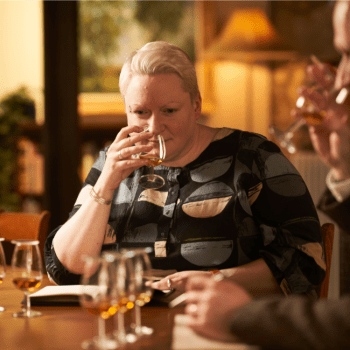
Women have also played important roles across the entire supply chain, whether as site managers in distilling, or leading in maturation processes. There has also been a change in production areas, such as cooperages and copper smithing, where women have increasingly made their presence known.
“I believe it’s important to highlight the contributions of women in the whisky industry. Throughout the industry, there have always been remarkable women,” Walker explains. “However, the industry – and the media – hasn’t always done a great job of showcasing this. We all need to improve in showcasing women and increasing diversity in advertising, articles, and our overall approach moving forward.
“I used to get frustrated when asked about being a woman in whisky, but I now see it as part of my responsibility to emphasise that women’s presence in the industry is not new and that they have always enjoyed whisky.”
But equality is not only about including more women, as Walker emphasises: “Moreover, we must support women and individuals from other diverse groups, ensuring they have a network of support. This way, if they encounter difficulties – whether in the workplace, on social media, or at whisky shows – they will feel backed and empowered to effect change.”
For Walker, whisky represents the idea of a spirit that can be enjoyed by everyone, within the appropriate legal drinking age, regardless of who they are.
“Whisky offers amazing flavours, textures, and aromas,” she says. “Even if you think you don’t like whisky, I encourage people to try different types and serves.”
Related news
The big interview: Carlie Dyer, Starward
